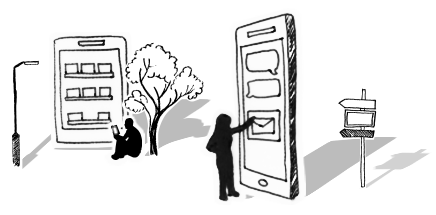




A Communications Strategy to Get Your Project Heard
Three effective ideas that will help your communications strategy get your project heard across a busy change environment.
When we help clients with Communication challenges, it’s often against the backdrop of an already-hectic change environment. In these situations, many projects are competing for attention, and it frequently falls to the project managers to run their own communications strategy – formulating their project messages and getting them out there.
So how can managers make it easy for themselves? We’ve identified three essential steps to develop a comms approach that gets in front of people.
1. Know who you’re talking to and stay relevant
Who is the audience and why should they care about this work?
A change programme may impact thousands across an organisation. This can lead to unwieldy stakeholder maps and elaborate messaging as project teams try and engage ‘everyone’.
To make it manageable, as part of your communications strategy be selective about audience segmentation. Identify no more than five segments around whom to plan engagement activities.
Devise these audience groups so they align to the project’s specific comms objectives. They may be characterised by their demographic, their channel preferences or by the way the project is likely to impact how they work.
For example, a logistics client had to introduce new technology. They based their approach on how much training people would require. This meant disregarding seniority and location, to focus just on the fact that some people would need a greater commitment to the outcomes of change.
These segmentations might be simple. However, they help get the balance between a ‘one size’ approach which risks being bland, and a tailored approach which risks becoming unmanageably complex.
2. Use unexpected channel choices
A few select channels will beat a ‘blanket coverage’ approach and can lend some authenticity to your communications strategy.
Focus first on your audience segments. For each group, look for an engagement method which is credible but which is different enough to ‘cut through’.
For example, a national infrastructure client worked with user generated content to highlight to its people the importance of strong customer service.
Success, to this client, requires commitment from people in many different roles. However, the various role holders may not have felt so connected to each other. To demonstrate this the client team went to sites and asked some of these role holders “What do customers say about us?”. The result was a video that showed just how interdependent everyone really is.
3. Never stop building your stakeholder relationships
There is one quality that underpins positive stakeholder relations – trust. People talk about the value of responsiveness, connection and proactivity. Yet neither quality works without belief from people that you care about their goals and have the competence to support them.
Make an impression by showing you mean it. Plan regular interactions and updates with stakeholders, it’s one of the best investments for a long term programme, especially if they’re a little business change-weary.
When a project or programme is going full tilt, it can feel like a luxury to take a step back and reassess its communications strategy. However re-focusing can pay off with an approach that is both easier for the managers running it and more compelling for the audiences involved.
To get the latest change tips, advice and guidance directly to your inbox, sign up to our monthly Business Change Digest.
